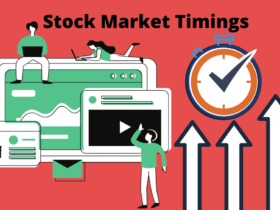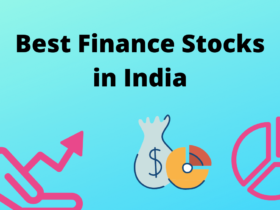Best Long-term stocks? As an investor, you have told that you cannot time the market. So, you probably look for the best stocks for the long term.
If you’ve been investing in stocks and dream of seeing your money multiply. Your best bet is to buy rock-solid stocks with undeniable growth catalysts and hold them for years, even practically forever. And to ignore their day-to-day price movements. with everyone.
After all, billionaire investor Warren Buffett has said that when owning stock exchange in well-managed businesses, his “preferred holding period is forever.”
Forever is an exceptionally long time, even for a buy-and-hold investor like Buffett. But his statement raises the question: “Which stocks are worth holding forever?”
The year 2020-21 has been nothing short of a whirlwind, but the stock market rose over 80% from March 2020 lows to the end of FY21.
Despite a pandemic, the upward trend in momentum is a relief to some and a surprise to many given the problems at the bottom of the pyramid.
A basket approach with a diversified mix of sound-quality stocks can help absorb short-term losses and provide sound risk-adjusted returns. The power of compounding can also come into play if stocks held for a longer period.
The key to becoming a successful investor is to be patient. You should allow your profits to grow and not reduce them unless there is a need for liquidity.
Here are some Best Long-term stocks as following :
Best Long-term stocks?
Apple (AAPL)
On August 2, 2018, Apple became the first US company to have a market capitalization of $1 trillion.
As of September 30, 2020, Apple was the largest holding in the Berkshire Hathaway portfolio, with a value of $117 billion.
Apple had a 40% share of the US smartphone market in the fourth quarter of 2020. It also led in the tablet industry with a market share of 29.2%. And on November 12, 2020, Apple paid a quarterly dividend of 20.5 cents.
Johnson & Johnson (JNJ)
This New Jersey-based health care and pharma giant is known as the “dividend elite.” From at least 1973 through 2020, Johnson & Johnson increased the value of its cash dividends every year.
In 2020, it paid a dividend of $3.98 per share, up from $3.75 per share in 2019. For the 10 years ended May 12, 2021, the stock’s split-adjusted return (including reinvested cash dividends) was 157.24%.
Larsen & Toubro
L&T is a major beneficiary of various infrastructure proposals announced in the recent budget and the company not only has a great execution history but has also demonstrated financial strength and has created value over the years.
The company has consistently delivered an ROE of 14% over the last 10 years with an operating margin of over 15% during this period. Nevertheless, it continues to trade at attractive valuations with a PE of less than 15x, making it an attractive value-buy.
Microsoft (MSFT)
In 2019, Microsoft became the third company to achieve a market cap of over $1 trillion. Co-founder Bill Gates is one of the richest people in the world.
Under the direction of Chief Executive Officer Satya Nadella, who was in charge of the company’s cloud infrastructure and services business, Microsoft has become less dependent on its Office software suite and Windows operating system for revenue.
In the first quarter of fiscal 2021, the company’s revenue from commercial cloud services grew 31% compared to a year earlier.
Microsoft has also paid quarterly dividends since the fourth quarter of fiscal year 2004. In the fiscal year 2020, it paid a quarterly dividend of 51 cents per share. The company paid a dividend of 56 cents per share for each of the first three quarters of the fiscal year 2021.
McDonald’s (MCD)
McDonald’s in the U.S. by Sales It is by far the largest fast-food chain in the U.S., with annual revenue nearly twice that of its nearest competitor, Starbucks.
It was the most valuable fast food restaurant brand in the world in 2020 with $129.3 billion.
McDonald’s has increased its total dividend payout every year since 1977. In 2020, its annual dividend was $5.04, up from $4.73 in 2019.
The stock’s total return, excluding reinvested dividends, was 194.13% for the 10 years ended May 12, 2021. Including the reinvestment dividend, it was 267.41%.
Amazon.com (AMZN)
Amazon is the second-largest retailer in the world in terms of revenue, after only Walmart. Its 2020 revenue totaled $232.88 billion. 2122 But like its rival Microsoft, Amazon is relying more and more on its cloud computing business to drive revenue and profit margins.
The stock’s average annual return from 2016 to 2020 was 38.93%. Amazon was the second company to reach a $1 trillion market cap.
Alphabet (GOOGL, GOOG)
Alphabet largely controls the entire search engine universe (via Google) and online video (via YouTube). It’s also sitting on a ton of cash and securities: $135.1 billion as of March 31, 2021.
On January 16, 2020, Alphabet became the fourth company with a market cap of over $1 trillion.
Following a stock split in 2014, which was to retain co-founder Sergey Brin and Larry Page’s control over the company, there are now two separate classes of publicly traded Alphabet shares.
Each Class A share, with the symbol GOOGL, confers one shareholder vote. Holders of Category C shares, who trade under the symbol GOOG, have no voting rights. (There are also privately held Class B shares, which are held by the company’s founders and officers and provide 10 votes per share.)
Berkshire Hathaway (BRK.A, BRK.B)
Finally, we’re moving to Buffett’s own company. At $435,580 on May 12, 2021, Berkshire Hathaway’s Class A stock (BRK.A) was priced so expensive that most Americans would have to work several years to buy even a single share. Class B trades at a much lower price: $284.07 on that date.
Buying Berkshire stock is like betting on Buffett, who in the 1960s became the sixth richest person in the world with a net worth of $107.6 billion as of May 12, 2021, on his investments in textile mills.
It also means buying a piece of a larger stable of companies, both well-known and obscure. These include insurance company GEICO, fast-food chain international Dairy Queen, battery maker Duracell, packaged food giant KraftHeinz, paint maker Benjamin Moore and Acme Brick Company.
Only 56 years have passed since 1965, which is much shorter than “forever”. But if you had invested $1,000 with Buffett that year, it would have been worth $18 million in 2021.
Kotak Mahindra Bank
Amid the pandemic, the government took effective steps to ensure that credit availability for businesses is not a problem. Actually, the RBI reduced the interest rates and announced a moratorium to give relief to the borrowers.
While this was a positive move, many banks have been cautious and made adequate provisions to safeguard their assets.
Kotak Mahindra Bank is one such bank that raised funds at the start of the pandemic and has been extremely cautious when it comes to lending.
It maintains its book quality and is consistently delivering 20%+ CAGR profit growth for the last 10 years.
HDFC Ltd
Another player to benefit from the lower rates is HDFC Ltd. This NBFC has a strong brand, an experienced leadership team and market share in loans making it a true leader.
READ ALSO : Top 5 Best Finance Stocks in India 2021
READ ALSO : Best Energy Stocks to investing in Us 2021









